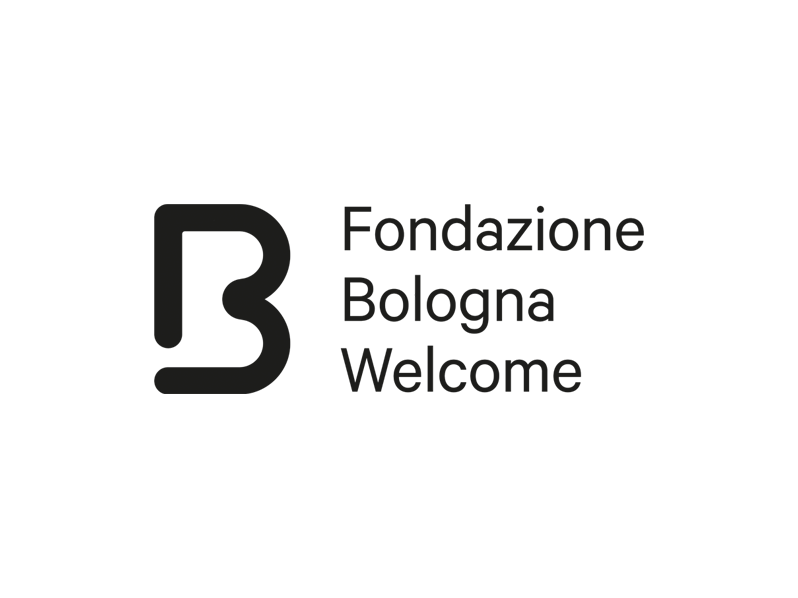Michelangelo and Bologna: movement and expressiveness
Updated on 12 November 2025 From Bologna Welcome
This itinerary was created specially for the “Michelangelo and Bologna” exhibition at Palazzo Fava – Palazzo delle Esposizioni, but it is intended to further serve as a guide for discovering the city sites that marked the great artist’s training and development. Bologna still preserves traces of the young Michelangelo, who found inspiration here in the masters of the 15th century and in the city's fervent cultural climate. From the sculptures of Jacopo della Quercia and Niccolò dell'Arca to the memory of Dante, to the commissions of the Bentivoglio family (the principal patrons of the Bolognese Renaissance), this itinerary allows you to discover the places that marked his training and influenced his style.
Finally, some FAQs about the itinerary and how to learn more about the subject
Piazza S. Domenico, 13
This place conceals immensely valuable works of art among its ancient chapels. In particular, the Ark of San Domenico stands out: it was begun by Nicola Pisano and added to in 1469 by Niccolò dell'Arca. Michelangelo also contributed, creating the statues of San Procolo and San Petronio, as well as the angel holding the candelabra. These works clearly show the formal innovations he was developing, inspired by the style of Jacopo della Quercia.
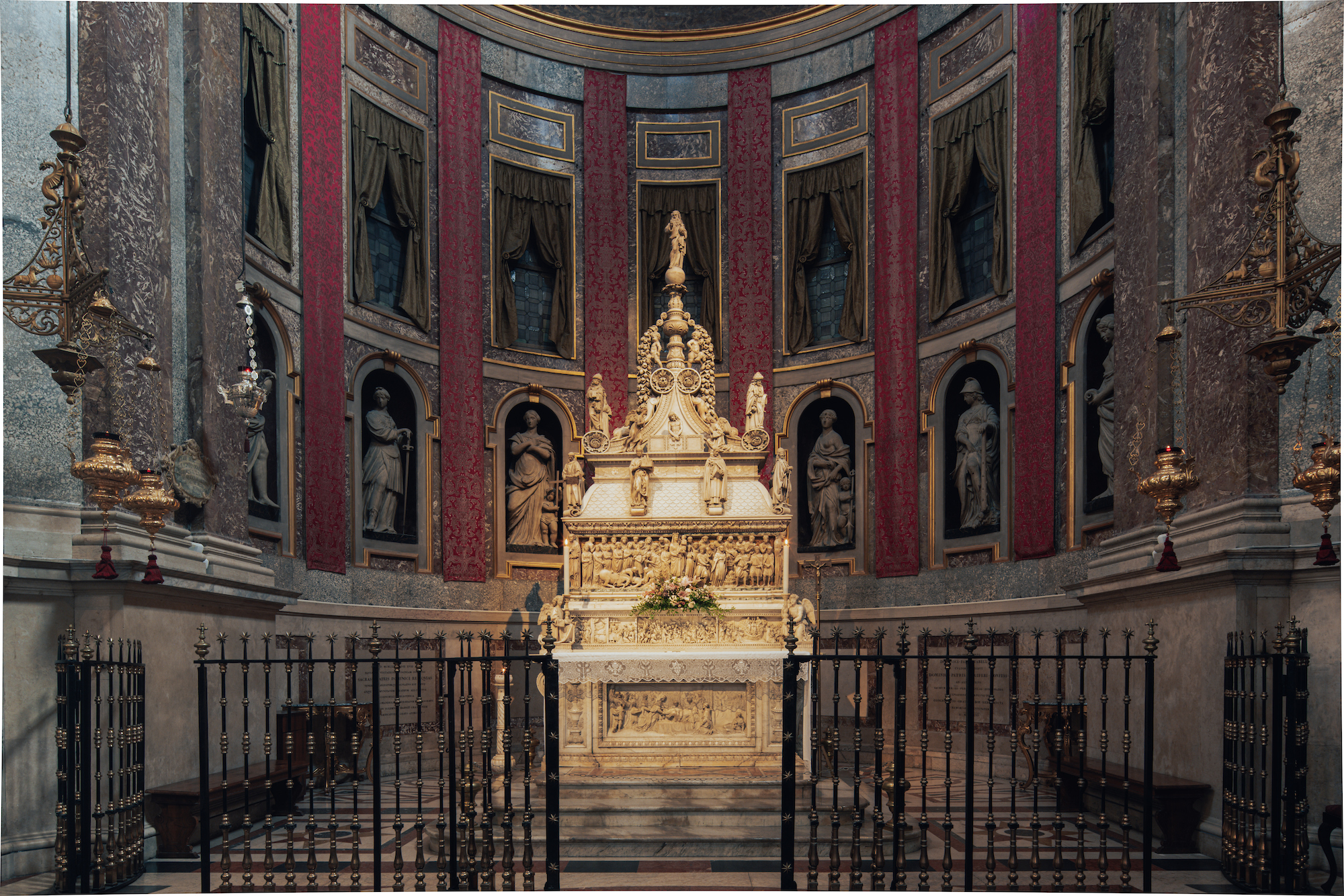
Piazza Luigi Galvani, 1
The Palazzo dell'Archiginnasio, built between 1562 and 1563, was the first unified seat of the University of Bologna. Today it houses a prestigious library, where a famous edition of Dante's Divine Comedy from 1481 is preserved. Dante was a rich source of inspiration for Michelangelo, both in painting and poetry. In the adjacent Piazza Galvani, a commemorative plaque tells us that the sculptor created the bronze statue of Julius II in this spot in 1506. It was later destroyed by the Bolognese.
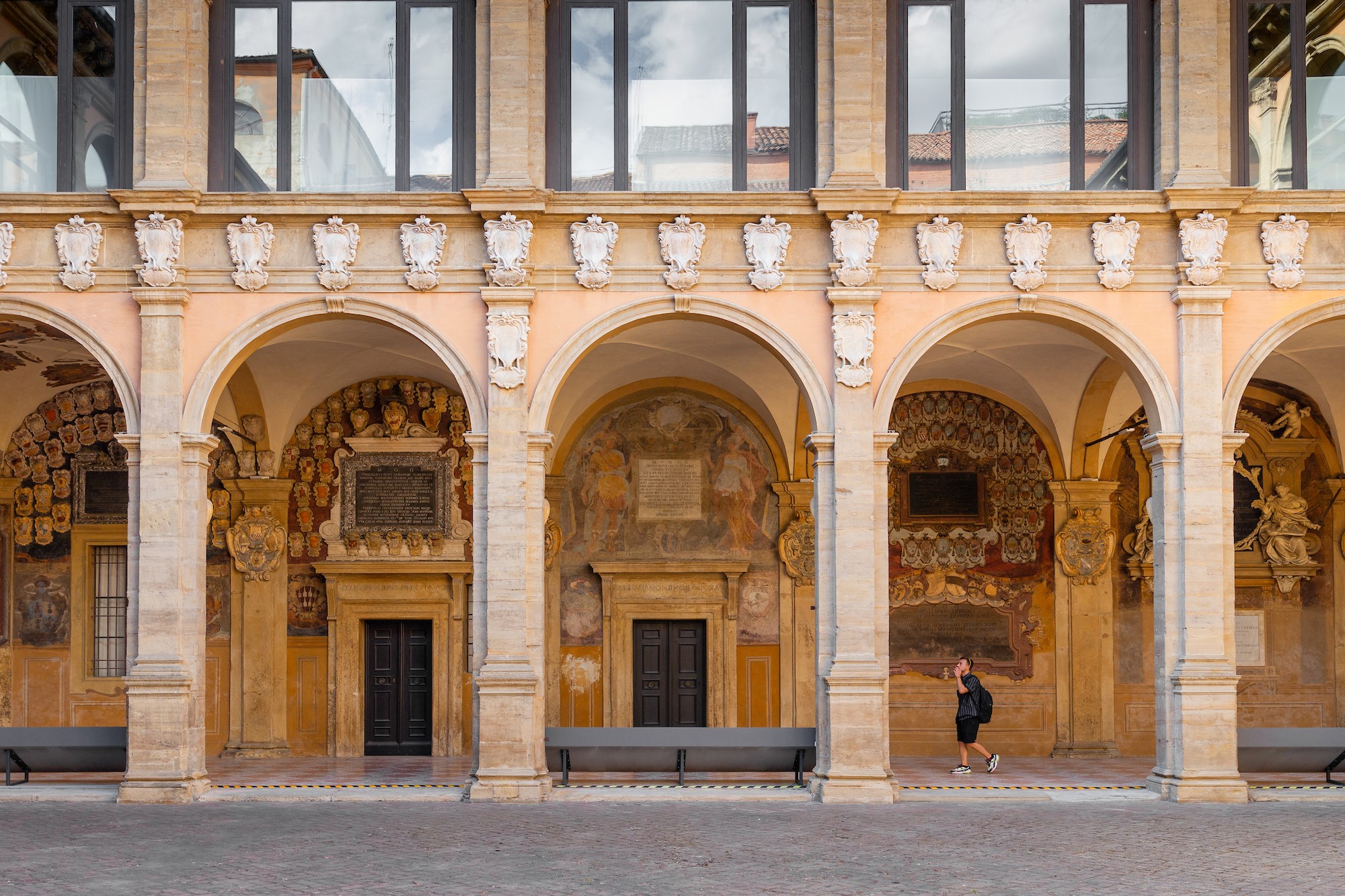
Piazza Maggiore, 1/e
From its very distinctive and recognisable façade, we can already sense the stylistic innovations that the basilica’s architecture introduced into the artistic landscape. The splendid sculptures decorating the central portal are the work of Jacopo della Quercia, the artist who made a decisive contribution to the move away from the Gothic style in Italy. The deep and textured drapery of the garments and the strong expressiveness of the faces undoubtedly influenced Michelangelo's style.
Via Clavature, 8/10
In 1463, Niccolò dell'Arca delivered his masterpiece to the Hospital of Santa Maria della Vita. It consisted of a group of seven polychrome terracotta sculptures depicting the Lamentation over the Dead Christ. Even today, it is difficult to establish with certainty the original arrangement of the figures. This intense “theatre of pain”, bursting with expressiveness in the faces, gestures and drapery, deeply impressed the young Michelangelo, who considered himself first and foremost a sculptor
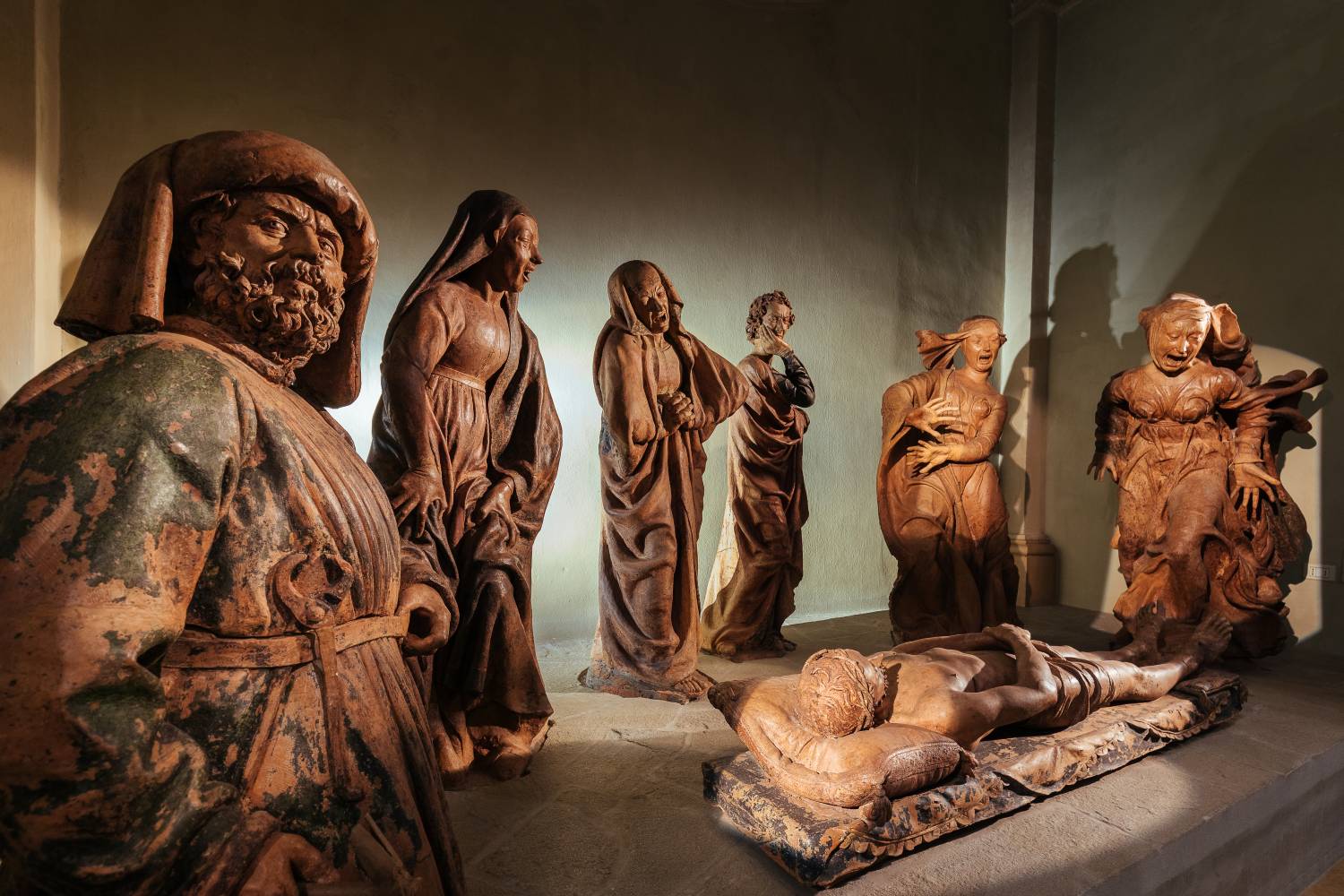
Photo by Elettra Bastoni
Palazzo Ghisilardi Via Alessandro Manzoni, 4
The rooms of this museum give us a precious glimpse of artefacts and works of great value. In particular, in the sections dedicated to weapons and armour, several items on display remind us of the famous story of the admirable golden dagger, similar to the cinquedea that Michelangelo forged during his stays in Bologna, on commission from Pietro Aldobrandini. The fame of the Bolognese blades grew to the point of surpassing even that of the renowned Florentine variant.
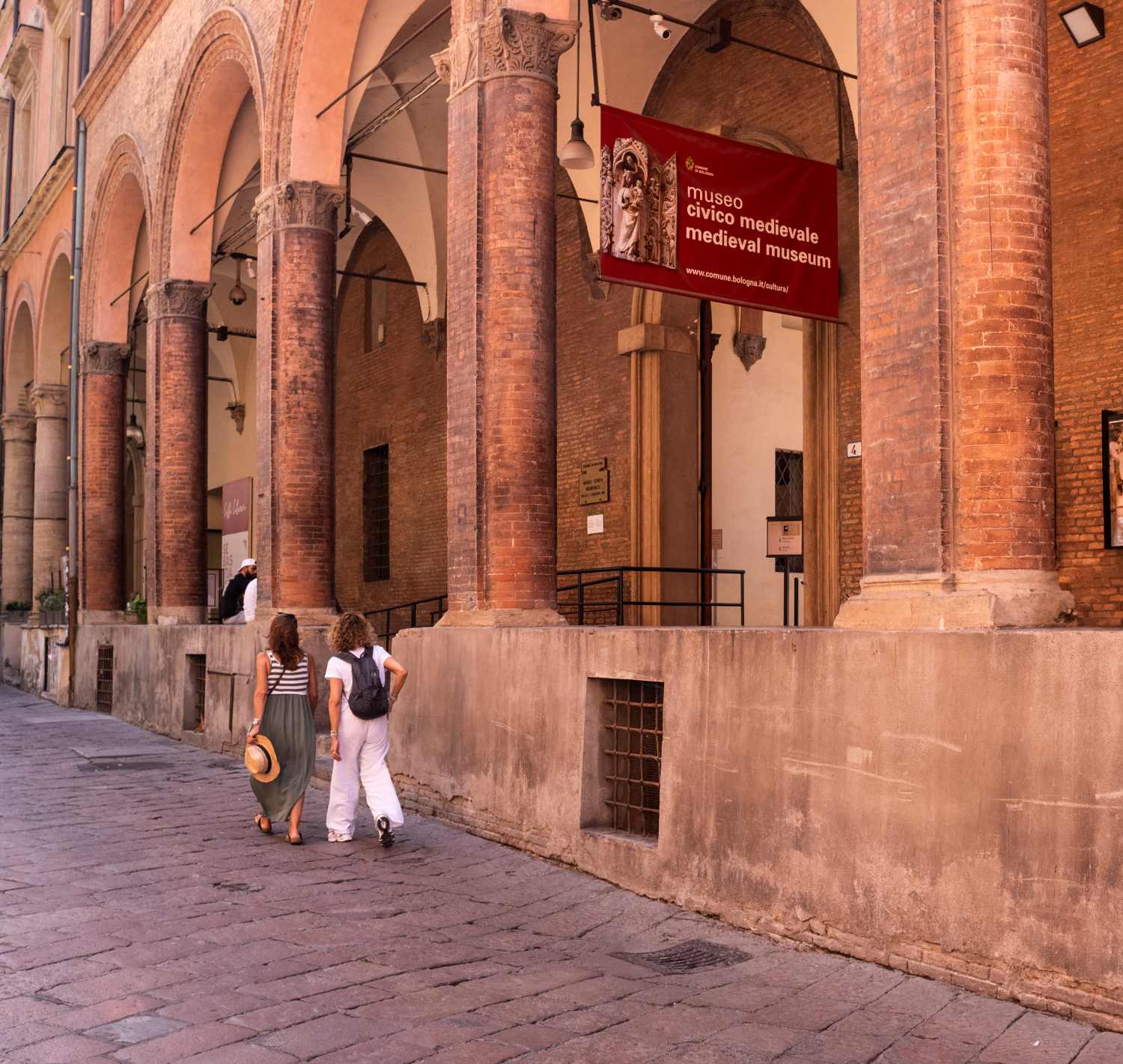
Via Zamboni, 15
In 1505, Giovanni II Bentivoglio commissioned his court artists Francesco Francia, Lorenzo Costa and Amico Aspertini to create a cycle of frescoes dedicated to the Stories of Saints Valerian and Cecilia. This cycle was the last great decorative undertaking of the Bentivoglio family. Although the narrative is mainly choral in character, variations in tone and poetics emerge from the different artists: from the harmonious and measured rhythms of Francia to the more disturbing tensions of Aspertini.
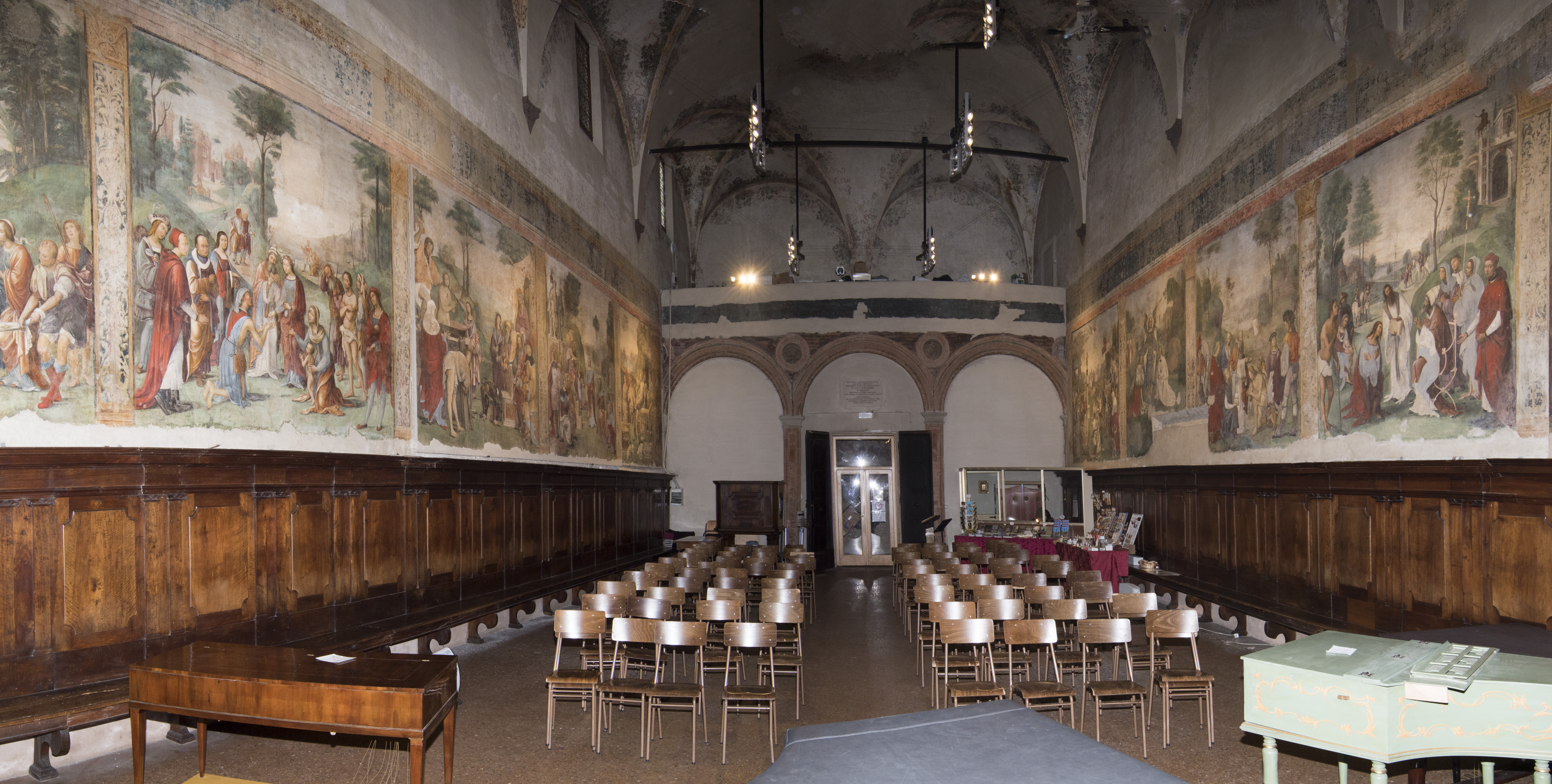
Via delle Belle Arti, 56
The National Art Gallery of Bologna began as an art collection and now documents the evolution of painting through works ranging from the Middle Ages to the 18th century. Particularly significant is the section dedicated to the 16th century, whose highlights include altarpieces created during the Napoleonic suppressions by artists from Bologna, Ferrara and abroad. An essential stop for understanding the rich cultural context that Michelangelo found in Bologna.

Piazza Malpighi, 9
One of Italy’s earliest examples of Gothic architecture clearly derived from France, this 13th-century basilica preserves works of great value that Michelangelo had the opportunity to admire, in particular the mausoleums of the glossators. These are located outside, next to the flying buttresses, and date back to the 13th century. The documents that have come down to us show how the great Florentine artist was also a keen student of the art of the past.
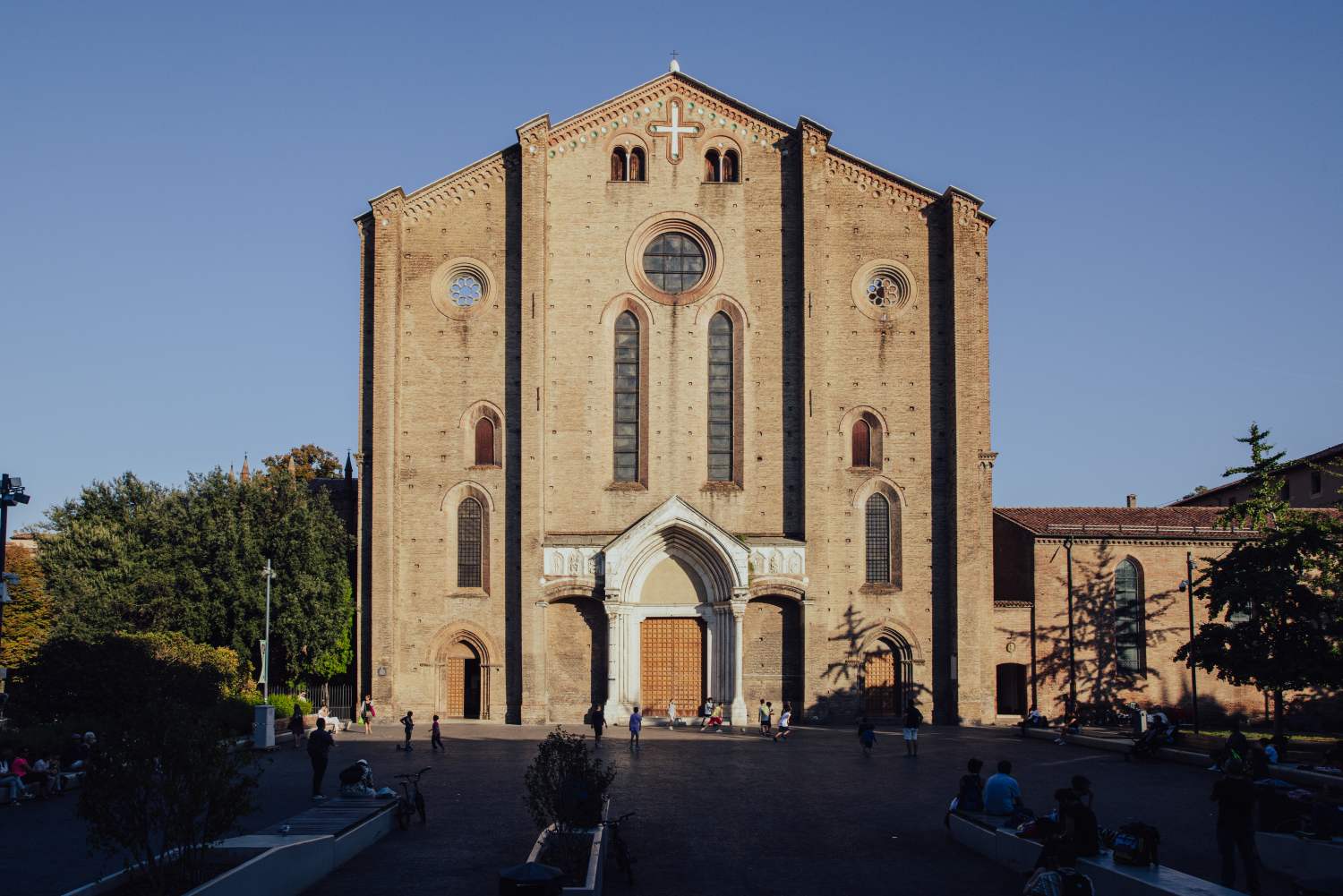
Photo by Piergiorgio Sorgetti
Via Castiglione, 10
A comprehensive and quintessential overview of the history and evolution of Bologna down through the centuries. An opportunity to grasp the cultural and artistic vitality of a city that has hosted historical events and personalities of lasting historical significance. A valuable opportunity to learn more about the Renaissance period, when Michelangelo was present in the city on two different periods, leaving an unmistakable mark.

| Michelangelo and Bologna Movement and expressiveness | Download |

Michelangelo stayed twice in the city of Bologna between the end of the fifteenth century and the beginning of the sixteenth. He first arrived in Bologna in 1494, where, hosted by Giovan Francesco Aldrovandi, he devoted himself to studying the classics. Drawing inspiration from the works of Jacopo della Quercia and Ferrara painting, he collaborated on the completion of the Ark of San
Domenico, sculpting the figures of Saints Petronius and Proculus and the angel bearing the candelabra. In 1506, Michelangelo returned to Bologna on commission from Pope Julius II to create a bronze statue of the latter for the façade of San Petronio, a work that was later destroyed.
Yes, several museums and cultural institutions offer itineraries specifically on Michelangelo and Bologna. For more information, visit genusbononiae.it and dearguests.com to find out the dates of the guided tours.
All information regarding addresses, opening hours and contact details is available on our website . Bologna Welcome is in contact with the museums and cultural sites featured in this publication and on the website. However, we invite you to check also the official websites of the places you intend to visit to ensure that you can plan your visit according to your needs.
For interesting facts, information and stories about the artist's life and the history of his masterpieces, we recommend visiting the website bolognawelcome.com. Furthermore, if you are in the city, you can visit the Bologna Welcome tourist information point for even more information
